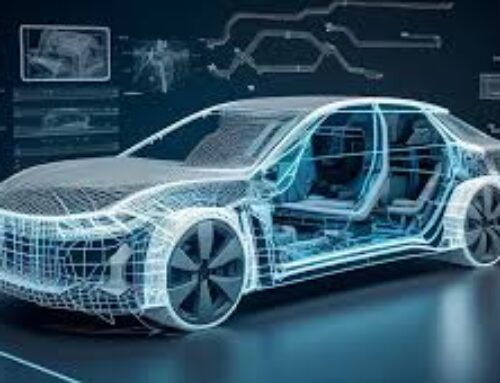The dawn of autonomous vehicles (AVs) is not just a leap forward in automotive technology but a transformative force for urban infrastructure. As cities around the world begin to integrate these self-driving marvels into their fabric, the implications for traffic management, public space allocation, and environmental policies are profound. This article explores how autonomous vehicles are reshaping urban landscapes, what challenges they bring, and the potential they hold for creating more sustainable, efficient, and human-friendly cities.
The Rise of Autonomous Vehicles
Autonomous vehicles, once a staple of science fiction, have rapidly advanced to become a reality thanks to breakthroughs in artificial intelligence, sensor technology, and computing power. Companies like Tesla, Waymo, and numerous other startups have already begun testing AVs on public roads, signaling a significant shift towards more intelligent transportation systems.
Impact on Urban Planning
Redefining Road Design
Traditional road designs cater to human drivers’ needs, focusing on visual cues and manual controls. However, AVs rely on sensors and algorithms to navigate, which could lead to a rethinking of road signage, lane markings, and traffic signals. Urban planners are exploring less cluttered roadways, smoother traffic flow, and potentially narrower lanes dedicated to AVs, freeing up space for other uses.
Transforming Parking
AVs offer a dramatic change in parking requirements. With the ability to drop off passengers and park themselves, or continually move around as part of a shared fleet, the need for expansive parking lots and multi-story car parks could diminish. This reclaimed space offers cities new opportunities to develop parks, residential areas, or commercial zones.
Enhancing Public Transport
Autonomous technology is not limited to private cars; it extends to public transport systems as well. Self-driving buses and shuttles could become more cost-effective and frequent, providing reliable public transport services that adapt in real-time to changes in passenger demand. This shift could significantly enhance public transport’s appeal, reducing the reliance on private car ownership and its associated infrastructure demands.
Environmental and Safety Benefits
Reduced Emissions
AVs are predominantly electric, aligning with global efforts to reduce urban air pollution and greenhouse gas emissions. By optimizing driving patterns and reducing traffic congestion, AVs could further lower the overall carbon footprint of urban transport.
Increased Safety
One of the strongest arguments for AVs is the potential for drastically reducing traffic accidents, which are often caused by human error. Autonomous vehicles, governed by precise algorithms and continuous learning systems, promise a future with fewer road fatalities and injuries.
Challenges to Overcome
Cybersecurity and Privacy
The increased connectivity required for AVs introduces new risks, including the potential for hacking and data breaches. Ensuring the cybersecurity of autonomous vehicles and protecting users’ privacy becomes paramount in this technology’s deployment.
Legal and Ethical Issues
The shift to AVs also raises complex legal and ethical questions. Who is liable in the event of an accident involving an autonomous vehicle? How do we encode ethical decisions into AI algorithms? These questions require thoughtful regulation and public discourse.
Infrastructure Investment
Transitioning to an AV-friendly infrastructure requires substantial investment. Upgrading roads, developing new traffic management systems, and other changes will necessitate significant public and private funding, and the economic benefits must be clearly articulated to justify these investments.
Conclusion
Autonomous vehicles hold the promise of revolutionizing urban mobility, creating smarter, safer, and cleaner cities. However, realizing this potential requires proactive urban planning, regulatory frameworks, and continued technological innovation. As we stand on the brink of this automotive revolution, the role of urban planners and policymakers is more crucial than ever, ensuring that the transition to autonomous transportation benefits all segments of society.







Leave A Comment